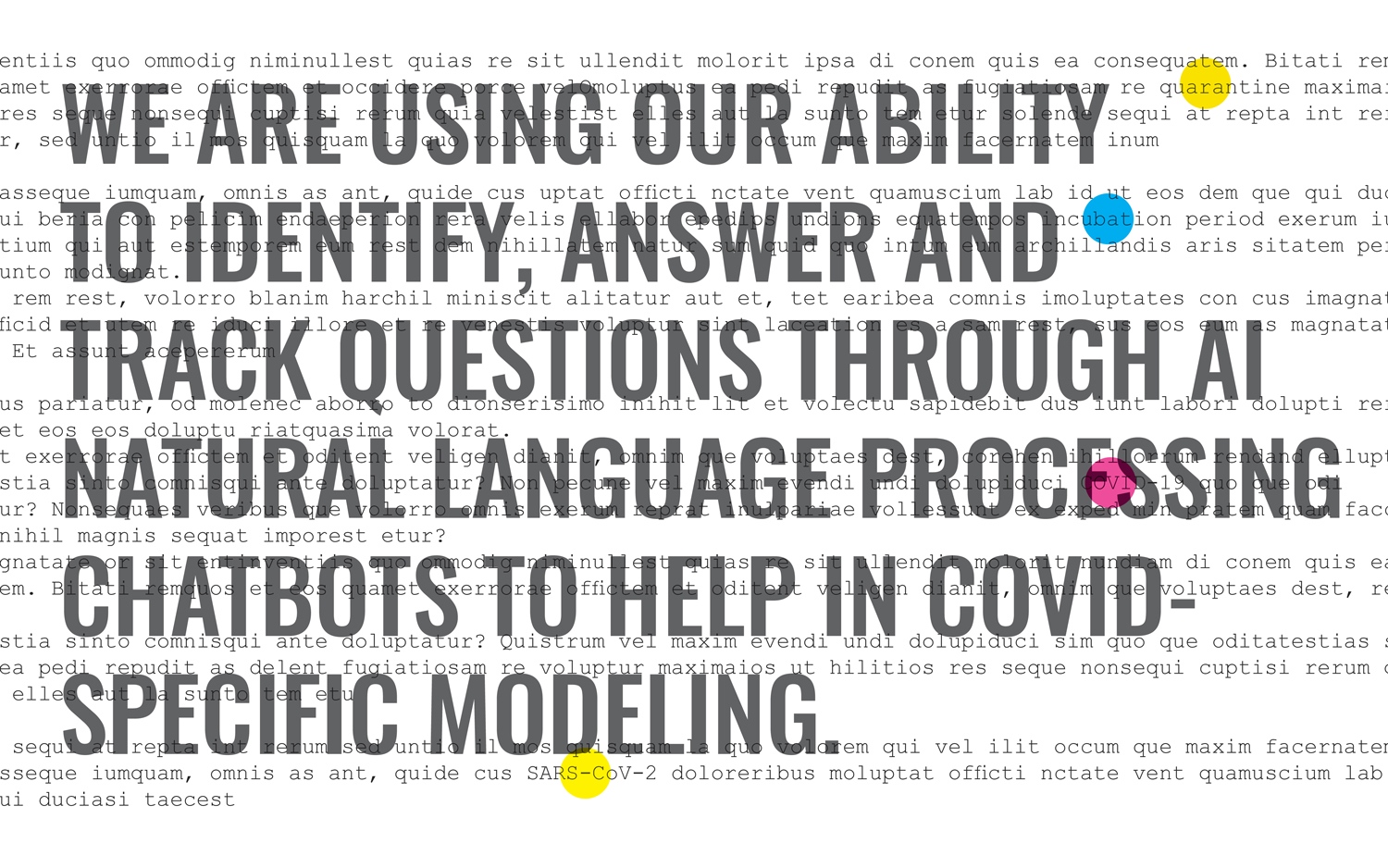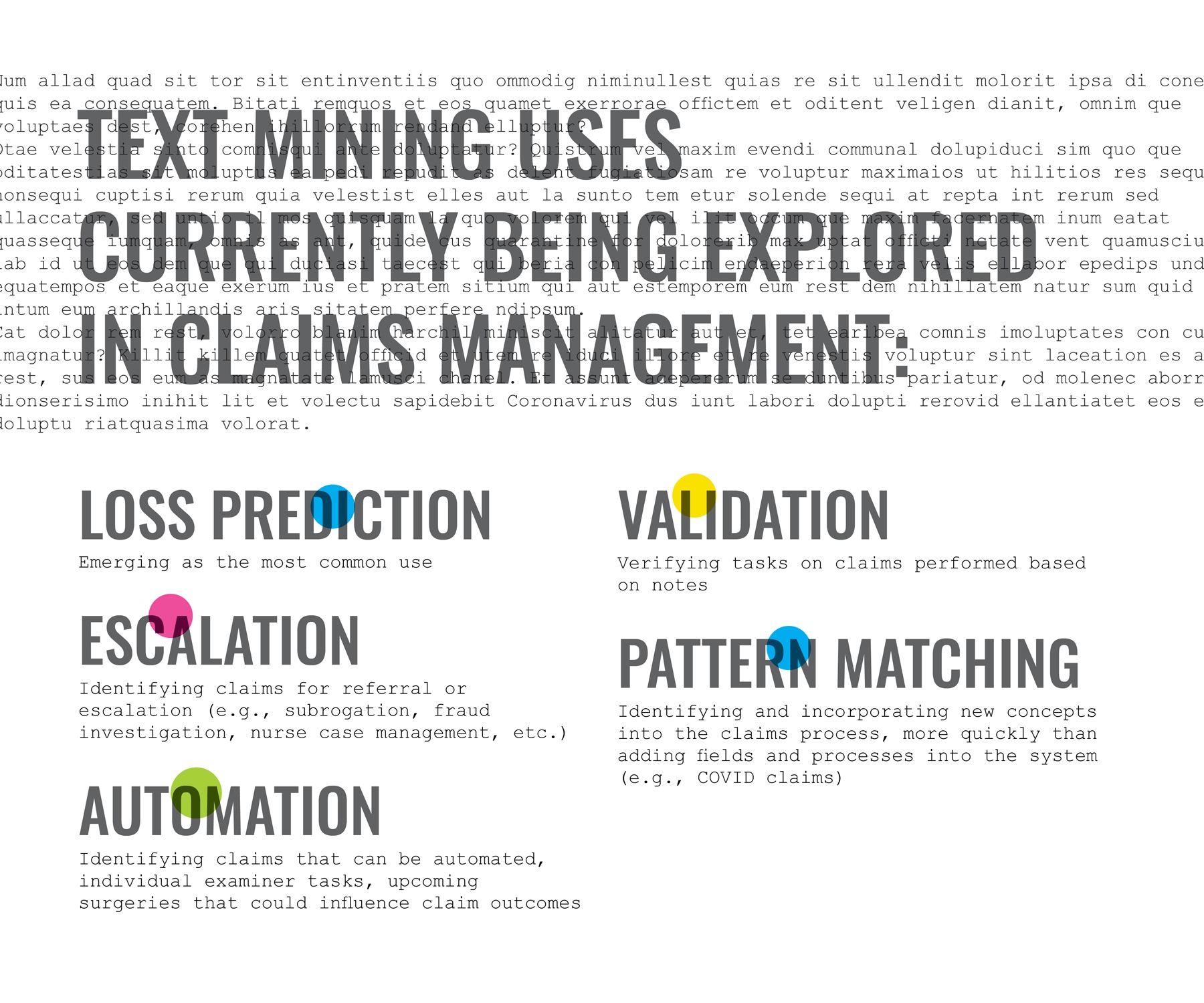It’s safe to say it’s been a year chock full of surprises — unanticipated events, unforeseen circumstances and some unimaginable outcomes. As we close in on 2021 (and, perhaps hopefully, begin to close the door on the challenges of 2020), it’s clear that we’ll need to make the most of the predictive capabilities and innovation we have on hand, applying the unique learnings and approaches to reporting and modeling we’ve adapted in a year like no other.
Tools like artificial intelligence, machine learning, datafication and robotic process automation are transforming the claims journey. And when it comes to the changes we’ve seen for reporting mechanisms and modeling, advanced analytics are taking the driver’s seat. We are integrating new models for COVID-19, adjusting our decision optimization tools and taking an increasingly solutions-oriented approach to analytics reporting.

COVID-19 modeling
We’re all adjusting to technology in the time of COVID-19. How can we best use the technology at hand to adapt our response?
In addition to the advancements text mining has brought us, we are using our ability to identify, answer and track questions through AI natural language processing chatbots to help in COVID-specific modeling. Our monthly reports include the volume of people coming to Carey, the Sedgwick chatbot, asking COVID-related questions.
Additionally, using the data at hand, we created a model for our clients to predict the cost of COVID-19 on new and existing claims. With the expected long-tail impact of COVID-19, this will help us help our clients plan for now and into the future. Our model is also gauging the impact of COVID-19 on non-COVID claims. Data from this model is available in a dashboard showing the impact across our organization, illustrating totals and trends in multiple categories:
- Severity, duration and cost implications from quarantine cases to confirmed positive cases and beyond
- Breakdowns by state vs. nationally
- Leave trends vs. workers’ compensation trends
- Impact of lack of access to healthcare
- Delays in surgeries
- Court closures or delays impacting claims closure and settlements
Text mining
Following a year where expectations went out the window, the industry is leaning into data more than ever — and that’s saying something. When the ground wobbles, we steady ourselves by seeking more depth, more accuracy, greater precision. Good data helps organizations anticipate, expect and prepare for altered courses. The bigger question, then, becomes how do we make that data more “parameterized,” so it’s simpler to access and use?
Trends in datafication show this: We are increasingly able to translate behaviors into usable data that can help us understand and inform processes. Sophisticated machine learning tools, such as chatbots, image recognition and automated data mining are used more and more to support and enhance the digital conversation between claim stakeholders. Text mining is one such capability we can expect to see as a growing influencer for analytic predictive models and a way to make our systems more robust. Companies are working through how best to implement it in a scalable way, even as they identify and weigh its potential uses and benefits. By adding this to our analytical models — as an enhancement, not a replacement — we can more easily flag and identify those claims that have notes and text on a particular subject. In turn, we gain a deeper understanding of user needs and learn more data patterns that help develop decision trees.

For Sedgwick, text mining goes deeper than ever before and makes data mining a much more efficient, quick process — more reasonable for a large number of claims. We have thousands of data fields in our systems, plus more claims history than any other TPA in the market. Being able to get to analytics surrounding millions of freeform notes records has yielded strong results. With ongoing upgrades, we are increasing our ability to perform text mining on the large amounts of unstructured data that our claims adjusters produce. The ability to extract and analyze the important details within an adjuster’s notes significantly improves our ability to identify and prioritize claim-related action items, and to create and compare optimal models for future concerns.
There is no limit to the number of triggers by which clients may wish to be notified or that may influence the trajectory of a claim — COVID-19 data is just one example. Certainly, the more robust the information contained in notes, the more informative the predictive models can be. Current initiatives in text mining will give us the capability for deeper analysis by classifying data by sentiment and topic. For example, sentiment analysis and natural language processing allow Sedgwick to approach the intent of data in new ways that could predict potential litigation or impact reserves.
> Learn more — check out this expanded article, including sidebar content "Tech track: What else is on the horizon for Sedgwick clients?" in Sedgwick's digital magazine, edge, issue 15